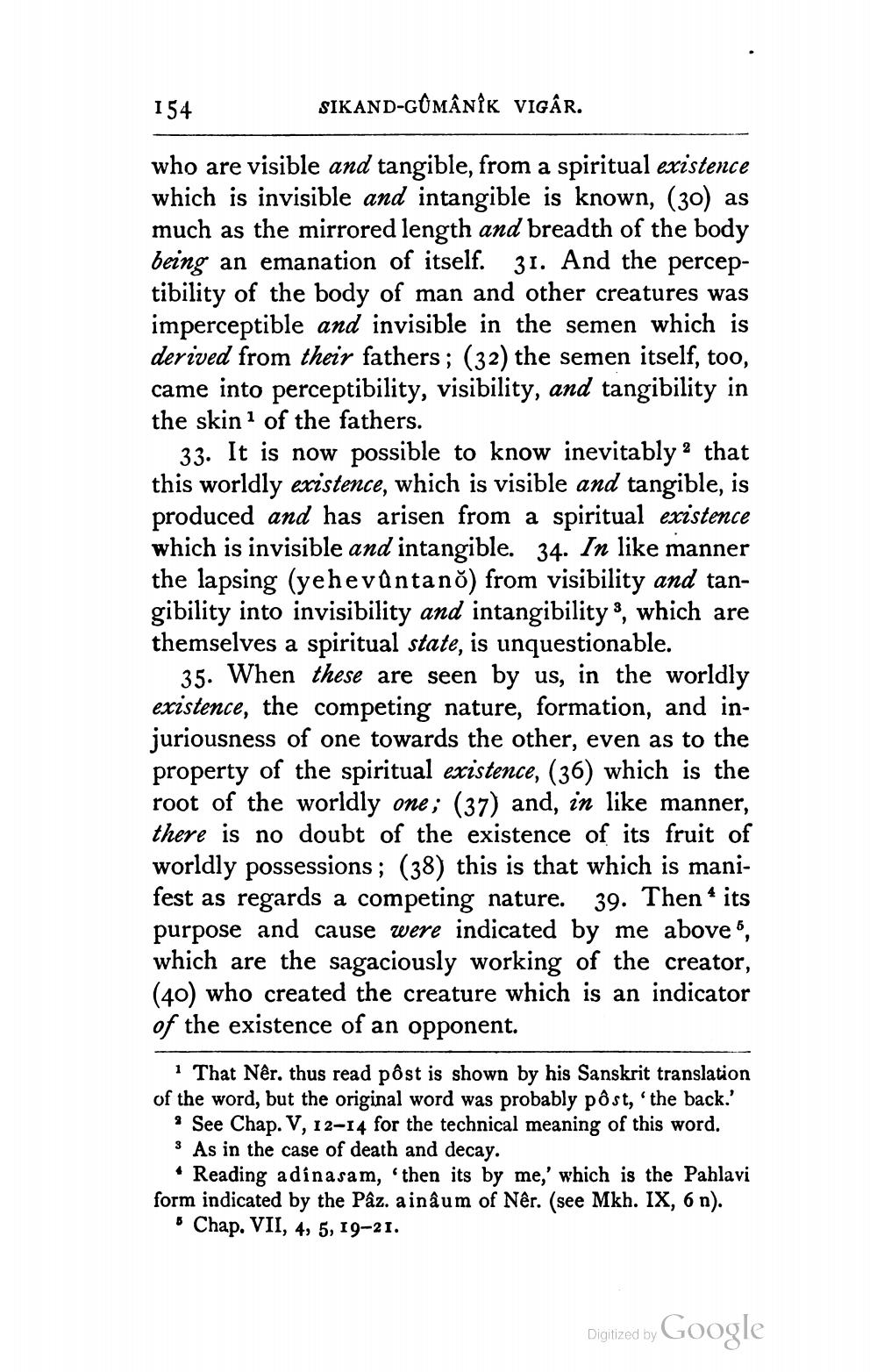________________
154
SIKAND-GÜMÂNÍK VIGÂR.
who are visible and tangible, from a spiritual existence which is invisible and intangible is known, (30) as much as the mirrored length and breadth of the body being an emanation of itself. 31. And the perceptibility of the body of man and other creatures was imperceptible and invisible in the semen which is derived from their fathers; (32) the semen itself, too, came into perceptibility, visibility, and tangibility in the skin 1 of the fathers.
33. It is now possible to know inevitably 2 that this worldly existence, which is visible and tangible, is produced and has arisen from a spiritual existence which is invisible and intangible. 34. In like manner the lapsing (yehevântano) from visibility and tangibility into invisibility and intangibility 3, which are themselves a spiritual state, is unquestionable.
35. When these are seen by us, in the worldly existence, the competing nature, formation, and injuriousness of one towards the other, even as to the property of the spiritual existence, (36) which is the root of the worldly one ; (37) and, in like manner, there is no doubt of the existence of its fruit of worldly possessions; (38) this is that which is manifest as regards a competing nature. 39. Then * its purpose and cause were indicated by me above 5, which are the sagaciously working of the creator, (40) who created the creature which is an indicator of the existence of an opponent.
1 That Nêr, thus read pôst is shown by his Sanskrit translation of the word, but the original word was probably pôst, the back.'
See Chap. V, 12-14 for the technical meaning of this word. 3 As in the case of death and decay.
* Reading adinasam, then its by me,' which is the Pahlavi form indicated by the Pâz. ainâum of Nêr. (see Mkh. IX, 6 n).
5 Chap. VII, 4, 5, 19-21.
Digitized by Google




